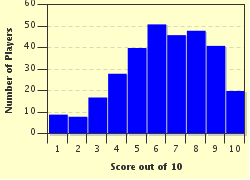Quiz Answer Key and Fun Facts
1. This instrument is mostly associated with the Swiss Alps but is also played in the Carpathian Mountains of Poland and Romania as well as Lithuania and Scandinavia. It is distantly related to the Etruscan lituus. Name this instrument.
2. Which double-reed instrument, dating back to the medieval and Renaissance periods, is the predecessor of the oboe?
3. Originally a miniature carillon, this instrument's earliest known use was in 1739 when Handel used one in a production of "Saul." Name this instrument.
4. This woodwind instrument is the forerunner of the bassoon. More manageable than the bass shawm due to its doubled tube, its name came from a short barreled cannon of "curtailed" length. Name this instrument.
5. Which instrument, originally known as an organistrum, was built for use in churches and monastery schools to teach music and provide correct intonation for singers?
6. Used primarily in Latin American dance music, this instrument is actually a hollowed gourd filled with seeds and shaken in order to provide rhythm. What is it called?
7. Descended from the psaltery, this keyboard instrument was highly popular in Elizabethan homes. Despite its name, it was not named for Elizabeth, the Virgin Queen. It dates back to 1460, fifty years before Elizabeth's birth. What is this instrument called?
8. This instrument is one of the oldest and dates back to ancient Egypt. The Pied Piper of folklore used this instrument to lure away children from villages. This instrument is called what?
9. Dating back to the 11th century and known by the Romans, Greeks and Sumerians, this aerophone is so closely associated with Scotland that it is easily recognized by appearance and sound. Can you name it?
10. Despite its name, this instrument is the tenor version of the oboe. At one time used mostly in French military music, what is this misnamed instrument?
Source: Author
nmerr
This quiz was reviewed by FunTrivia editor
ertrum before going online.
Any errors found in FunTrivia content are routinely corrected through our feedback system.


